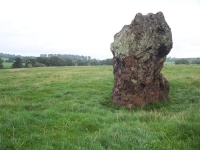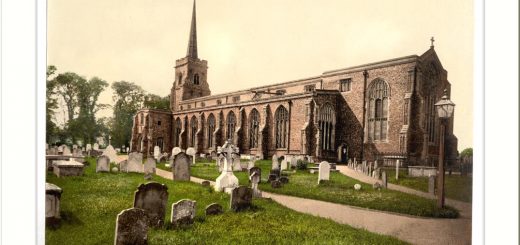St Michael’s Mount
St Michael’s Mount is a picturesque rocky island that has been described as the ‘Jewel in Cornwall’s crown’ – perhaps a reason for its popularity with visitors. The Mount has been associated with religious worship from the twelfth century, when a Benedictine monastery was erected here, although legend and conjecture suggest that the Mount has been seen as a place of spiritual importance long before that.
 St Michaels Mount is thought to have been the site of a tin port in the late Iron Age, just before the Roman Invasion. The importance of the mount as a place of pilgrimage traditionally dates back to the 5th century, when a group of people had a vision of St Michael over the mount. The legend is somewhat garbled, and the vision has been attributed to various groups of people. It was this event that is supposed to have given the Mount its archangel dedication, although this may date to much later when the Benedictine monastary was founded. The Mount is also associated with St Keyne, who traditionally blessed a stone seat with the power to grant dominance in marriage, depending on who managed to sit on it first.
St Michaels Mount is thought to have been the site of a tin port in the late Iron Age, just before the Roman Invasion. The importance of the mount as a place of pilgrimage traditionally dates back to the 5th century, when a group of people had a vision of St Michael over the mount. The legend is somewhat garbled, and the vision has been attributed to various groups of people. It was this event that is supposed to have given the Mount its archangel dedication, although this may date to much later when the Benedictine monastary was founded. The Mount is also associated with St Keyne, who traditionally blessed a stone seat with the power to grant dominance in marriage, depending on who managed to sit on it first.
 A Benedictine monastery was built here in 1135, which was a dependency of Mont St Michael in Brittany. This lasted until the dissolution of the Monasteries by Henry VIII in the 16th century. One interesting story suggests the bones of a giant man were discovered when the church was rebuilt in the 14th century, after an earthquake destroyed the original structure. The remains of the monastery were rebuilt into a castle, which was the home of the St Aubyn family from the 17th century, and is now owned by the National Trust.
A Benedictine monastery was built here in 1135, which was a dependency of Mont St Michael in Brittany. This lasted until the dissolution of the Monasteries by Henry VIII in the 16th century. One interesting story suggests the bones of a giant man were discovered when the church was rebuilt in the 14th century, after an earthquake destroyed the original structure. The remains of the monastery were rebuilt into a castle, which was the home of the St Aubyn family from the 17th century, and is now owned by the National Trust.
 St Michaels Mount was once known as Cara Cowze in Clowze, or, The Hoar Rock in the Wood, which is seen by some as a folk memory of when the sea was much further back, and the area covered in woodland. The tradition was most probably passed on from written records when the mount was a monastic settlement linked with Mont St Michael in Brittany. St Michael’s Mount is also not far from the legendary lost land of Lyonesse. The Mount was also the legendary abode of the giants Cormoran and his wife Cormelian. Jack the Giant killer eventually defeated Cormoran, after the giant terrorised the surrounding lands.
St Michaels Mount was once known as Cara Cowze in Clowze, or, The Hoar Rock in the Wood, which is seen by some as a folk memory of when the sea was much further back, and the area covered in woodland. The tradition was most probably passed on from written records when the mount was a monastic settlement linked with Mont St Michael in Brittany. St Michael’s Mount is also not far from the legendary lost land of Lyonesse. The Mount was also the legendary abode of the giants Cormoran and his wife Cormelian. Jack the Giant killer eventually defeated Cormoran, after the giant terrorised the surrounding lands.
St Michael’s Mount is also the starting point for the infamous St Michael’s ley, a broad line linking the Mount, St Michael’s Church Brentor, St Michael’s Church Burrowbridge, St Michael’s Church Othery, St Michael’s Church, Glastonbury Tor and Stoke St Michael. Although too short a space to elaborate on, this can really only be seen as modern folklore.
Directions: The Mount can be reached at low tide from Marazion off the A394, there is also a ferry service at high tide in good weather.




Recent Comments